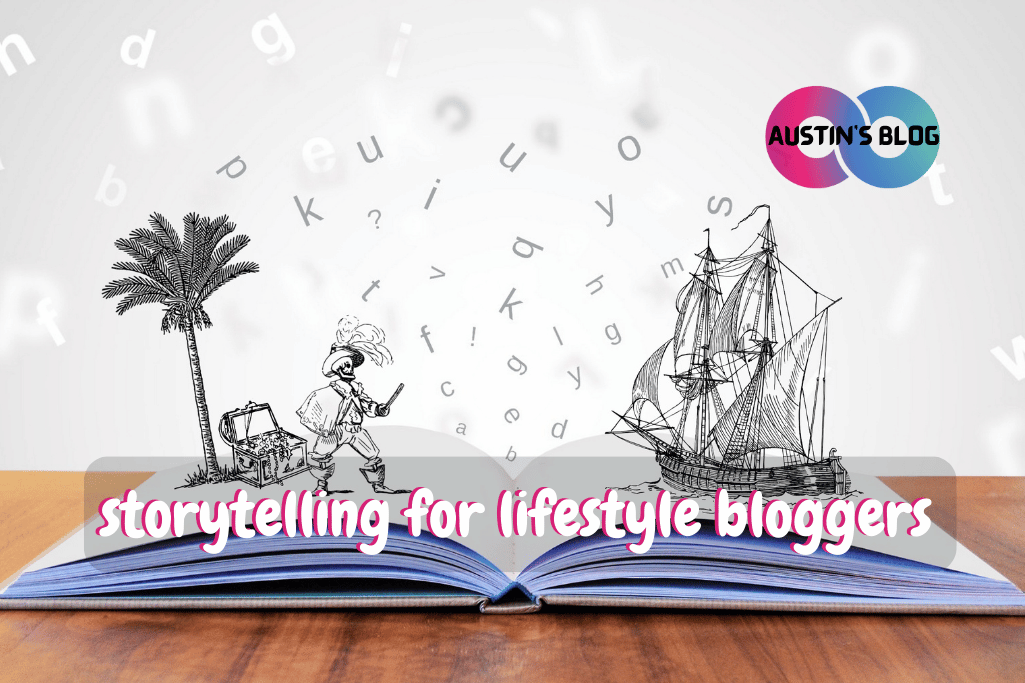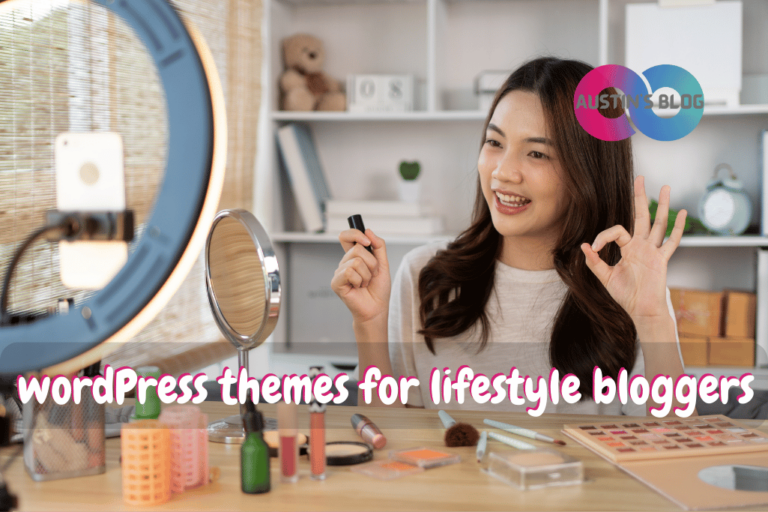Mastering the Art of Storytelling in Lifestyle Blogs: A Comprehensive Guide for 2025
Introduction
Hey there, fabulous lifestyle bloggers! Today, we’re diving into something that can truly transform your blog from a collection of posts into a captivating journey for your readers – the art of storytelling.
I remember when I first started blogging, I thought it was all about sharing information.
“Here’s how to make the perfect smoothie bowl,” or “Check out my 10 favorite summer dresses.”
But as I grew as a blogger, I realized something crucial: people don’t just want information; they want stories. They want to connect, to feel, to be transported.
My lightbulb moment came when I wrote a post about my disastrous attempt at making macarons.
Instead of just sharing the recipe, I told the story of my kitchen chaos, complete with flour-covered cats and a smoke alarm serenade.
To my surprise, that post got more engagement than any of my perfectly curated, information-packed posts ever had.
That’s when I truly understood the power of storytelling in lifestyle blogging.
So, grab your favorite notebook (or open that Google Doc), and let’s embark on a journey to unlock the storyteller within you.
Trust me, mastering this skill will not only make your blog more engaging but will also make your experience as a blogger infinitely more rewarding.
Why Storytelling Matters in Lifestyle Blogging
Before we dive into the how-tos, let’s talk about why storytelling is so crucial for lifestyle bloggers:
- Emotional Connection: Stories evoke emotions, helping readers connect with you on a deeper level.
- Memorability: Information wrapped in a story is more likely to be remembered than plain facts.
- Relatability: Stories make you more relatable, turning you from a distant blogger into a friend.
- Engagement: Good stories keep readers hooked, increasing time spent on your blog.
- Uniqueness: Your stories are uniquely yours, setting you apart in a crowded blogosphere.
- Brand Building: Consistent storytelling helps build a strong, recognizable brand voice.
Elements of a Good Story in Lifestyle Blogging
Every good story, whether it’s a novel or a blog post, has certain key elements:
- Characters: In lifestyle blogging, you’re often the main character, but don’t forget to bring others to life too.
- Setting: Paint a picture of where your story takes place. Make readers feel like they’re there with you.
- Conflict: Every story needs some tension or challenge to overcome. It doesn’t have to be dramatic – even a small hurdle adds interest.
- Plot: Have a clear beginning, middle, and end to your story.
- Theme: What’s the underlying message or lesson in your story?
- Voice: Your unique way of telling the story – this is what makes it distinctly you.
Pro Tip: You don’t need to include all these elements in every post, but keeping them in mind can help structure your storytelling.
Types of Stories That Work Well in Lifestyle Blogs
Different types of stories can be effective in lifestyle blogging:
- Personal Anecdotes: Share experiences from your own life that relate to your blog topic.
- Behind-the-Scenes: Give readers a peek into your process, whether it’s creating content or testing products.
- Transformation Stories: Share before-and-after experiences, whether it’s a room makeover or a personal journey.
- Day-in-the-Life: Take readers through a typical (or not-so-typical) day in your life.
- Origin Stories: Share how you got started in your niche or how you discovered a passion.
- Failure Stories: Don’t be afraid to share when things go wrong – these can be some of the most relatable posts!
- Success Stories: Celebrate your wins, big and small, and share what you learned along the way.
Pro Tip: Mix up the types of stories you tell to keep your content fresh and engaging.
Crafting Your Story: A Step-by-Step Guide
Now, let’s break down the process of creating a story for your lifestyle blog:
- Find Your Hook: Start with something attention-grabbing. It could be a surprising statement, a vivid description, or an intriguing question.
- Set the Scene: Give readers context. Where are you? When is this happening? What’s the mood?
- Introduce the Challenge: What problem or situation are you facing?
- Take Us on the Journey: Guide readers through your experience. What did you do? How did you feel?
- Share the Outcome: What was the result? It doesn’t always have to be a happy ending – honesty is key.
- Reflect on the Lesson: What did you learn? How can readers apply this to their own lives?
- Call to Action: Encourage readers to share their own experiences or try something new based on your story.
Pro Tip: Before you start writing, jot down the key points of your story. This can help you maintain a clear structure as you write.
Incorporating Storytelling into Different Lifestyle Blog Niches
Storytelling can work in any lifestyle blog niche. Here are some ideas:
- Fashion: Tell the story of how you put together an outfit, or share a memorable experience you had while wearing it.
- Food: Don’t just share a recipe – tell us about its origin, or a special memory associated with the dish.
- Travel: Take us on your journey, from planning to unexpected adventures during the trip.
- Fitness: Share your personal fitness journey, including setbacks and triumphs.
- Home Decor: Tell the story of a room transformation, including the inspiration and challenges.
- Beauty: Share your skincare journey or the story behind finding your signature look.
Pro Tip: Always tie your story back to how it can benefit or inspire your readers.
Balancing Storytelling with Practical Value
While stories are engaging, your readers are also looking for practical value. Here’s how to strike a balance:
- Use Stories to Illustrate Points: Let your story lead into tips or advice.
- Incorporate Practical Elements: Include how-to sections, checklists, or resource lists within your storytelling posts.
- End with Takeaways: Conclude your story with clear, actionable insights for your readers.
- Break Up the Story: Intersperse your narrative with useful subheadings and bullet points.
- Use Visuals: Complement your story with helpful infographics, photos, or videos.
Pro Tip: Think of your story as the “why” and the practical elements as the “how.” Both are crucial for a well-rounded post.
Developing Your Storytelling Voice
Your storytelling voice is what makes your blog uniquely you. Here’s how to develop it:
- Be Authentic: Write like you talk. Don’t try to sound like someone else.
- Show Personality: Let your quirks shine through. Are you witty? Sarcastic? Eternally optimistic? Let it show in your writing.
- Be Consistent: While your voice may evolve over time, try to maintain consistency across your posts.
- Practice: The more you write, the more natural your voice will become.
- Read It Aloud: This can help you catch awkward phrasing and ensure your writing sounds natural.
Pro Tip: Create a “voice guide” for yourself with examples of phrases you use, your tone, and any unique quirks in your writing style.
Using Storytelling Techniques in Social Media
Your storytelling doesn’t have to be limited to your blog posts. Extend it to your social media:
- Instagram Stories: Use the sequential nature of Stories to tell a narrative.
- Captions: Turn your Instagram or Facebook captions into mini-stories.
- Twitter Threads: Use threads to tell longer stories in bite-sized pieces.
- YouTube: Use storytelling techniques to structure your videos.
- Pinterest: Create story pins that take users through a process or journey.
Pro Tip: Adapt your story to fit the platform while maintaining your unique voice.
Common Storytelling Pitfalls to Avoid
Even experienced bloggers can fall into these traps:
- Oversharing: Be mindful of privacy – yours and others’.
- Rambling: Stay focused on the main point of your story.
- Neglecting Structure: Ensure your story has a clear beginning, middle, and end.
- Being Inauthentic: Readers can spot fake stories a mile away. Stay true to your experiences.
- Forgetting Your Audience: Always consider how your story relates to your readers.
- Overdramatizing: While some drama is good, too much can feel inauthentic.
Pro Tip: Have a trusted friend or fellow blogger read your stories before posting. They can provide valuable feedback.
Measuring the Success of Your Storytelling
To improve your storytelling, you need to understand what works. Here’s what to look at:
- Engagement Metrics: Comments, shares, and time spent on page can indicate how captivating your story is.
- Feedback: Pay attention to the comments. Are readers sharing their own similar experiences?
- Social Shares: Stories that resonate often get shared on social media.
- Return Visitors: Are readers coming back for more of your stories?
- Email Responses: If you share stories in your newsletter, check the response rate.
Pro Tip: Don’t be discouraged if a story doesn’t perform well. Analyze why and use that insight for future posts.
The Future of Storytelling in Lifestyle Blogging
As we look ahead, here are some trends to keep in mind:
- Multimedia Storytelling: Incorporating video, audio, and interactive elements into your stories.
- Micro-Stories: Short-form storytelling for platforms like TikTok and Instagram Reels.
- AR and VR: As these technologies become more accessible, they could offer new ways to immerse readers in your stories.
- Collaborative Storytelling: Involving your audience in the storytelling process.
- Data-Driven Storytelling: Using data and statistics to enhance and validate your narratives.
Pro Tip: Stay open to new storytelling formats, but always ensure they align with your brand and resonate with your audience.
Conclusion: Your Storytelling Journey Begins!
Whew! We’ve covered a lot of ground, haven’t we? From understanding why storytelling matters to crafting your own captivating narratives, you now have all the tools you need to weave magic with your words.
Remember, becoming a great storyteller is a journey. Your first attempts might feel clunky or uncomfortable, and that’s okay!
Like any skill, storytelling improves with practice. So don’t be afraid to experiment, to be vulnerable, to let your unique voice shine through.
Start small if you need to. Maybe begin by incorporating a personal anecdote into your next how-to post, or challenge yourself to write one fully story-based post this month.
Pay attention to how it feels to write it and how your audience responds.
I’d love to hear from you! What’s your biggest challenge when it comes to storytelling in your blog?
Or do you have a storytelling triumph to share? Drop a comment below and let’s chat. After all, sharing our stories is what this community is all about!
Remember, every great lifestyle blogger is, at heart, a storyteller. You’re not just sharing information; you’re inviting readers into your world, letting them see life through your eyes.
That’s a beautiful, powerful thing.
So go forth, tell your stories, and watch as your blog transforms into a vibrant, engaging space that readers can’t wait to return to.
Stay fabulous, keep storytelling, and happy blogging!
Frequently Asked Questions: Storytelling for Lifestyle Bloggers
Q: What are the essential elements of storytelling for lifestyle bloggers in 2025?
A: The essential elements of storytelling for lifestyle bloggers include authenticity, creativity, and the ability to compel the audience.
Bloggers should focus on integrating personal stories and visual storytelling to foster a connection with their audience.
Highlighting relatable experiences and aligning them with the audience’s preferences can elevate your lifestyle blog.
Q: How can lifestyle bloggers leverage visual storytelling to enhance their content?
A: Lifestyle bloggers can leverage visual storytelling by using compelling imagery and illustrations to make their stories come to life.
Creating a collage of visuals that align with the narrative can foster a more immersive experience.
This approach helps in telling a story that resonates with the audience and elevates the overall impact of the blog.
Q: What storytelling ideas can lifestyle bloggers use to engage their audience?
A: Bloggers can engage their audience by telling personal stories that showcase authenticity and truth.
Delving into transformative experiences and using digital storytelling techniques can forge a deeper connection.
Recommended from Medium, these storytelling ideas can help bloggers tell their stories in a way that is both relatable and compelling.
Q: How can lifestyle bloggers ensure their storytelling aligns with their audience’s preferences?
A: To align storytelling with the audience’s preferences, bloggers should first understand their audience’s interests and needs.
Conducting surveys or engaging with the audience through comments can provide insights.
Infusing these insights into the storytelling process will make your message more relatable and effective.
Q: What practical tips can lifestyle bloggers use to improve their storytelling skills?
A: Bloggers can improve their storytelling skills by regularly practicing writing and seeking feedback from their audience.
Reading recommended articles from Medium and learning from experienced storytellers can provide valuable writing advice.
Additionally, using tools like ChatGPT can help in generating fresh storytelling ideas and refining content.
Q: How can lifestyle bloggers use digital storytelling to create a better life narrative?
A: Digital storytelling allows bloggers to integrate multimedia elements such as videos, podcasts, and interactive graphics to tell stories more dynamically.
This approach can highlight personal growth and transformative experiences, creating a narrative that inspires a better life for both the blogger and their audience.
Q: Why is authenticity important in storytelling for lifestyle bloggers?
A: Authenticity is crucial because it builds trust and credibility with the audience. When bloggers tell their stories with honesty and transparency, it fosters a genuine connection.
This authenticity can compel readers to engage more deeply with the content and become loyal followers of the story blog.
Q: How can lifestyle bloggers use storytelling to foster creativity?
A: Storytelling can foster creativity by encouraging bloggers to explore new ideas and perspectives. By experimenting with different storytelling formats and techniques, bloggers can infuse creativity into their content.
This not only keeps the audience engaged but also allows the blogger to continually evolve and innovate their storytelling approach.
Q: What role does truth play in storytelling for lifestyle bloggers?
A: Truth plays a pivotal role in storytelling as it ensures the content is relatable and trustworthy.
By telling stories that reflect real experiences and emotions, bloggers can create a narrative that resonates with the audience.
This truthful approach can elevate the storytelling to a masterpiece that leaves a lasting impact.






